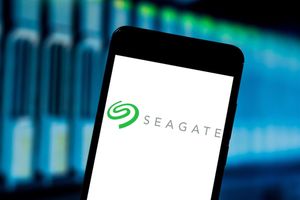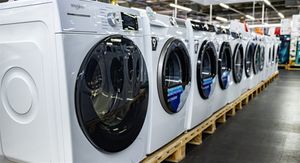
Discount grocery store chain Grocery Outlet (NASDAQ: GO) missed Wall Street’s revenue expectations in Q2 CY2025 as sales rose 4.5% year on year to $1.18 billion. On the other hand, the company’s full-year revenue guidance of $4.75 billion at the midpoint came in 0.8% above analysts’ estimates. Its non-GAAP profit of $0.23 per share was 32.9% above analysts’ consensus estimates.
Is now the time to buy GO? Find out in our full research report (it’s free).
Grocery Outlet (GO) Q2 CY2025 Highlights:
- Revenue: $1.18 billion vs analyst estimates of $1.19 billion (4.5% year-on-year growth, 0.6% miss)
- Adjusted EPS: $0.23 vs analyst estimates of $0.17 (32.9% beat)
- Adjusted EBITDA: $67.75 million vs analyst estimates of $64.29 million (5.7% margin, 5.4% beat)
- The company reconfirmed its revenue guidance for the full year of $4.75 billion at the midpoint
- Management raised its full-year Adjusted EPS guidance to $0.78 at the midpoint, a 6.9% increase
- EBITDA guidance for the full year is $265 million at the midpoint, above analyst estimates of $262.7 million
- Operating Margin: 1.1%, down from 2.3% in the same quarter last year
- Locations: 552 at quarter end, up from 524 in the same quarter last year
- Same-Store Sales rose 1.1% year on year (2.9% in the same quarter last year)
- Market Capitalization: $1.81 billion
StockStory’s Take
Grocery Outlet’s second quarter results received a positive market response, with management crediting operational changes and early benefits from its new store strategies for the performance. CEO Jason Potter highlighted improvements in inventory management, better merchandising, and disciplined cost control as key drivers, along with steady progress in piloting new store formats and technology upgrades. The company also attributed its results to a modest increase in same-store sales, improved gross margin through shrink reduction, and initial momentum from supply chain simplification. Potter noted, “We achieved our objectives for Q2…driving improvements in inventory management and merchandising.”
Looking forward, management’s guidance reflects confidence in the impact of its four key strategic imperatives, particularly the rollout of new operational systems and tools for independent operators. The company expects enhanced store performance and stronger returns through further optimization of merchandising, private label expansion, and targeted site selection. CFO Chris Miller emphasized that margin gains and cost savings will be strategically reinvested to support growth, while Potter cited plans to accelerate new arrival guides and forecasting tools, stating, “These improvements…will help IOs plan product with extreme value.” Management also expects continued benefits from talent upgrades and disciplined new store growth.
Key Insights from Management’s Remarks
Management underscored that Q2 performance was driven by operational improvements, targeted store expansion, and disciplined cost controls, with ongoing investments in systems and talent positioning the company for long-term growth.
- Operational improvement focus: Management attributed Q2 progress to upgrades in inventory management, merchandising, and the implementation of real-time order and arrival guides, which have increased in-stock levels and sales, especially for top-selling items.
- New store performance initiatives: The company rebalanced store growth toward core markets and enhanced site selection processes, with pilots showing new store cohorts are outperforming prior years, leading to expectations of higher cash returns in upcoming cohorts.
- Leadership and talent additions: Key hires, including a new Chief Merchandising Officer and two experienced board members, are expected to bolster execution and strategic oversight, with management citing their deep retail backgrounds as critical for upcoming systems rollouts and margin improvement.
- Supply chain and systems upgrades: The transition to a single distribution center in the Pacific Northwest was highlighted as a win for cost reduction and service reliability. Additional supply chain enhancements and systems optimizations are planned for the East region in the next quarter.
- Private label and merchandising pilots: Launches like the Second Cheapest wine label and increased focus on key value items (KVIs) were credited with driving customer engagement and margin accretion, while pilots in fresh category ordering delivered double-digit sales increases in test stores.
Drivers of Future Performance
For the remainder of the year, management sees optimization of store operations, merchandising, and technology as the primary themes supporting revenue and profitability targets.
- Store execution and system rollouts: Management believes continued rollout of new arrival guides and forecasting tools will improve inventory visibility, in-stock rates, and sales across the store base. Early pilot stores have delivered mid-single-digit comps, and these initiatives are expected to scale throughout the network.
- Disciplined new store growth: The company is deliberately slowing expansion, focusing on infill locations with proven demand and higher starting sales. Management expects this approach to raise returns on invested capital and minimize execution risk, especially as the mix of infill stores increases to over 50% of new openings.
- Cost leverage and margin initiatives: Ongoing cost reduction programs, supply chain simplification, and SG&A optimization are projected to produce meaningful savings. Management intends to reinvest some savings to support independent operators and drive comps, with substantial net benefits expected in 2026.
Catalysts in Upcoming Quarters
In the coming quarters, the StockStory team will be monitoring (1) the success of new arrival guide and forecasting tool rollouts in driving comp growth and improved in-stock rates, (2) sustained outperformance of new store cohorts and the evolving mix of infill versus new market openings, and (3) the realization of cost savings and SG&A leverage as systems optimizations are completed. Pilots in fresh and private label categories will also be important indicators of broader execution.
Grocery Outlet currently trades at $18.14, up from $13.01 just before the earnings. Is there an opportunity in the stock?Find out in our full research report (it’s free).
Now Could Be The Perfect Time To Invest In These Stocks
Donald Trump’s April 2025 "Liberation Day" tariffs sent markets into a tailspin, but stocks have since rebounded strongly, proving that knee-jerk reactions often create the best buying opportunities.
The smart money is already positioning for the next leg up. Don’t miss out on the recovery - check out our Top 9 Market-Beating Stocks. This is a curated list of our High Quality stocks that have generated a market-beating return of 183% over the last five years (as of March 31st 2025).
Stocks that made our list in 2020 include now familiar names such as Nvidia (+1,545% between March 2020 and March 2025) as well as under-the-radar businesses like the once-micro-cap company Kadant (+351% five-year return). Find your next big winner with StockStory today.
StockStory is growing and hiring equity analyst and marketing roles. Are you a 0 to 1 builder passionate about the markets and AI? See the open roles here.





